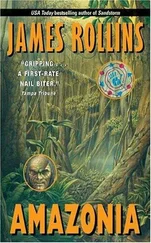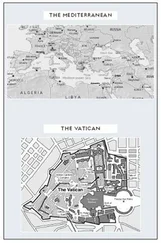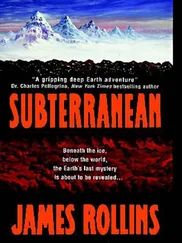She let him roll back on his own. Huge blue eyes, framed by a hint of eyelashes, ogled up at her, his lips pursed hungrily.
Edward Blake stood at her shoulder, watching her examination.
Petra was off in another lab, running the latest DNA analyses, using samples of the boy’s blood and skin, along with cells gathered from a mucosal swab.
“We should get another bottle.” Lisa snapped off her gloves. “He’s been suckling well on his own since we took out his NG tube and PICC line. Let’s keep him moving in that right direction. But all in all, he’s rallying beautifully.”
“That’s all because of you, Dr. Cummings,” Edward said.
It wasn’t false praise. Yesterday, she had found the child circling the drain. She had spent a full hour studying his labs, his radiographs, even his genetic analyses. She had stared with amazement at the triple helix formations on an electron micrograph: two natural DNA strands wrapped around an engineered foreign protein, PNA.
Peptide nucleic acid.
That little microscopic strand of PNA was the source of so much misery, horror, and abuse.
And it wasn’t doing the boy any good, either.
Edward had explained about the unraveling going on in the boy’s body, how these triple-helix compounds were breaking down. But the question still in the air was why . Did the boy get sick and that started to unravel the helices? Or did the unraveling make the boy sick?
The only way to know for sure was to stabilize the child and see if the unraveling stopped on its own.
Lisa had come up with a suggestion, after noting the slight spike in eosinophil levels in the boy’s lab work. Eosinophils were the white blood cells that modulated allergic inflammatory processes. They also reacted to parasitic infections, but stool tests had already ruled out that possibility.
The more likely source for this allergic response was the PNA strands. Peptide nucleic acid was a protein like any other, capable of being an allergen as surely as dust or dander. With the breakdown of the triple helices, the freed PNA was being washed out into the cytoplasm, then shed free of the cells.
Petra had shown her a picture of a worm-like PNA molecule squiggling out of an intestinal cell. This rush of engineered protein into the bloodstream and interstitial tissues triggered the mobilization of eosinophils, the body’s defense against such foreign invaders. This allergic anaphylaxis tipped the child into shock.
Recognizing this threat, Lisa had recommended a low-dose therapy of antihistamines and intravenous steroids to knock down that allergic response, to give the child’s body a chance to flush out the foreign allergen and stabilize again.
It worked out beautifully. She had kept a vigil beside the neonatal incubator all night, assisted by Edward as needed, and, hour by hour, the child improved. They were able to slowly unhook him from fluids, oxygen supplementation, and even the feeding tube.
Only one question remained: did it do any good?
Did the boy’s rallying health succeed in returning stability to the triple helices? She knew that was Edward’s hope. They both awaited Petra’s answer.
As Lisa fed the child with a bottle, Edward retired to a computer workstation in a neighboring cubicle. Both were lost to their own worries. Concern for the child’s well-being had staved off her terror for the past day, gave her something to focus on. She knew Kat was somewhere in this lab complex, but where was her friend holed up? For that matter, where was this lab?
So far, both Petra and Edward had treated her with a modicum of respect, appreciating and needing her help. She remembered those digitized words, a cold warning: Prove your usefulness, and you both continue to live .
With the child doing better, Lisa’s usefulness was about to come to an end.
Then what?
She remembered who had assigned her to this job in the first place, picturing his kind face, his soft words.
Thank you, Dr. Cummings, for agreeing to help my grandnephew .
Anger raged inside her against that cool, calm demeanor of Robert Gant. She knew how much pain and suffering and loss it cost to bring this special child into existence, to this place and time. Still, she could not blame the child for such atrocities. The boy might have been born out of blood and heartbreak-but he was still an innocent.
The child finished suckling, the bottle was empty. Those big eyes drooped, heavy with milk-sodden drowsiness. Lisa let him drift into slumber, oblivious to the horrors beyond the clear plastic walls of his incubator.
She turned to Edward and limped over to him, favoring her aching ankle. Up on the wall, a camera tracked her path, swiveling to follow her. She wondered if Robert Gant watched her or merely some bored guard.
Exhausted, Lisa was beyond subtlety or subterfuge. “Edward, what are you trying to accomplish with these triple helices?”
He swung around on his desk chair. “Ah, I can’t speak to the goal of my financial benefactors. All I know is my purpose in the grand scheme of things.”
“And that’s what?”
He raised an eyebrow, belying the hubris that followed. “To forge the key to life itself.”
He gave her a tired smile, and, surprisingly, she echoed it.
“As lofty as that might sound, PNA is that key,” Edward explained. “It unlocks the full power of DNA and places the blueprints of life into our hands. With PNA, genomics experts can engineer strands that can turn specific genes on or off, unfettering mankind from its biological limitations. But it also allows new genes to be introduced, new code written onto the PNA and inserted into a fertilized egg. In the end, God will no longer evolve man-we will.”
Edward stared toward the child in the incubator. “But all that will come later. For the moment, we have only one goal engineered into this first strain of PNA, a simple thing really.”
Lisa felt a sick turn to her stomach. “What goal?”
Edward’s eyes never left the sleeping boy, the doctor’s expression a mask of wonder and also sadness.
“Immortality.”
Lisa couldn’t hide her shock.
“Do not be so surprised, Dr. Cummings. This child is not the first immortal born into this world.” Edward finally turned to her, letting her see his sincerity. “They walk among us already.”
1:07 P.M.
Washington, DC
Five hours left .
Painter had returned to his own office, leaving the president with his daughter below, guarded by his Secret Service contingent. They were under the five-hour mark until James Gant would come out of hiding and pretend to be recovering from major surgery. Everything to maintain that ruse was already in place.
He found Kowalski sitting inside, his feet propped up on Painter’s desk, his arms folded over his belly, snoring.
Painter shoved his legs off.
The man snorted awake. “We ready?” he asked.
“As we’re ever going to be.”
Painter grabbed a holstered SIG Sauer from a cabinet. The rest of the strike team’s gear was waiting at the airstrip, a jet warming up. As he secured the shoulder harness and holster in place, his eyes caught on the picture of Lisa on his desk, smiling softly, hair glowing in the summer sun, lips parted slightly. His love for her was a tangible thing, not a thought or a feeling, but a weight in his heart, a pressure in his chest, a stirring of heat in his veins.
At that moment, he knew the truth.
I need to buy a ring .
Motion at the door drew his attention. Tucker stood there, shadowed by Kane.
Painter gave his holster harness a final tug, cinching it snugly, and faced the man. “Captain Wayne?”
Tucker stepped inside. “Sir, I’d like to join you on this mission.”
Читать дальше










